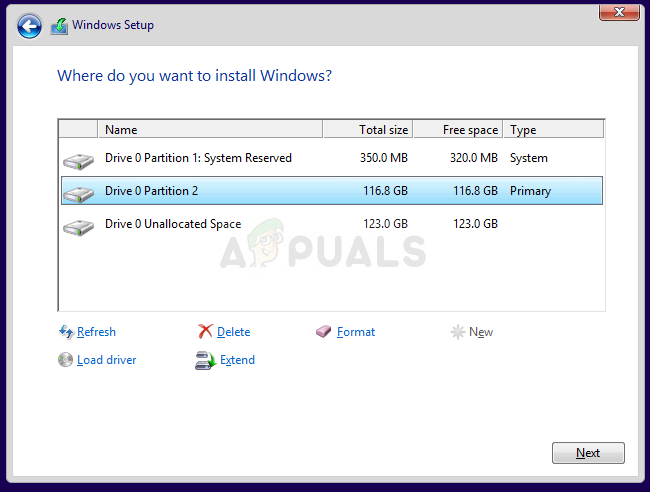Fix: The Computer Started using the Windows Installation Media
This scenario can be traced down to a single process on your computer: performing an upgrade to a new version of the Windows operating system or installing it from the scratch and it has been bugging users for quite a long time now.
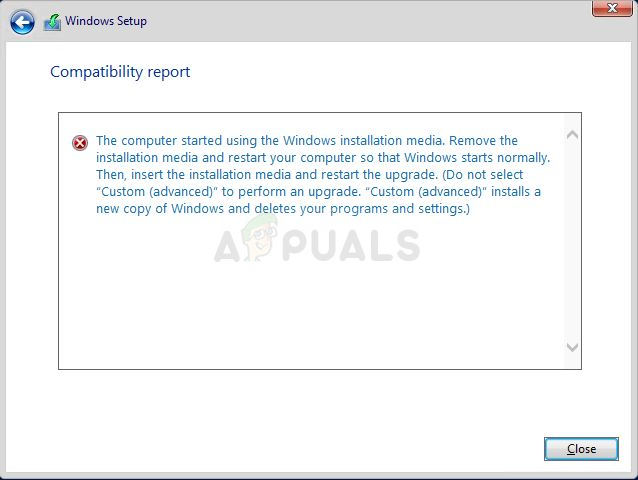
Either there is a complete confusion which can be fixed quite easily and which will be explained the first solution or you will have to perform some serious troubleshooting which is, of course, the longer and more complicated path. However, the problem should be resolved quickly if you follow the methods below carefully!
Solution 1: Run the Process from a Different Place
If you want to perform an upgrade on a PC which already has an operating system installed which can be booted into, you might have made a mistake if you booted from your recovery media (Windows installation DVD or USB) and tried to initiate the upgrading process from there.
That is the usual scenario and the error message is not in vain. Instead, you need to boot into your operating system and start the process from there.
- First of all, remove the installation DVD or USB from your computer completely when it has shut down completely and boot normally into your Windows operating system.
- After that, insert the storage device you want to use to perform and update and wait for it to load on your computer. Open This PC or My Computer on older versions of Windows by looking for it in Windows Explorer and locate the drive. If it’s a USB it should appear as a Removable Storage Device and a DVD would appear as such with the disc icon.
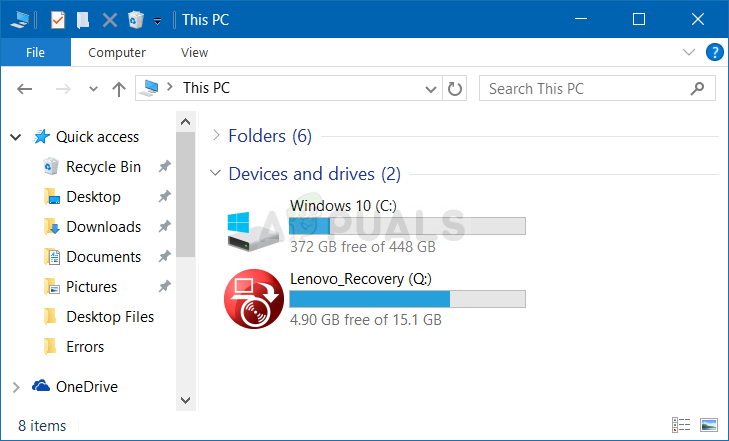
- Double-click on it in order to open and you should see a file named setup.exe. Run it and you should see a set of steps. If it is Windows 10 you are trying to update to from an older version of Windows follow the steps below.
- On the “What do you want to do?” screen choose the “Upgrade this PC now” option and click on Next. It will take a while to download the necessary files so stay patient.
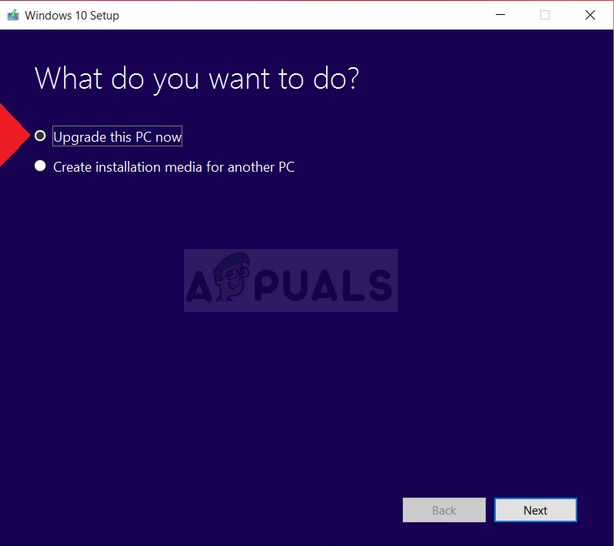
- Read the License terms on the window which will appear and click on Accept afterwards. After that, you will see the Ready to install window and an Install button at the lower right part so click on it and wait for the process to finish. After that, you will only need to setup certain settings which we will leave for you. The problem should be solved now.
Solution 2: Re-Insert Your Laptop’s Battery
This solution definitely sounds too good to be true and we were also skeptical about it but several users confirmed that it actually works and we had to place it in our article. Nonetheless, the process takes about a minute and it won’t cost you anything, especially if it actually solved the problem.
- Turn off your laptop and disconnect the AC adapter to make sure there is no current running. Release the latch or other attachment devices that hold your battery in its regular spot.
- Slide the battery out of its compartment or storage bay easily. Press the release button if there is one and carefully lift the battery out of its place. Avoid touching the contacts on the battery itself or inside the bay; the moisture on your fingertips could reduce the conductivity of the battery.
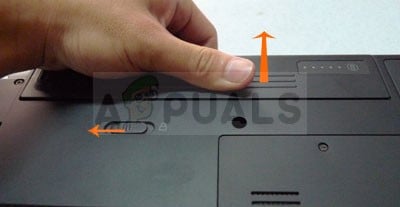
- Make sure to hold your laptop’s power button for at least 20 seconds in order to drain it from any current which may have remained. You should only do this with the both battery and AC adapter disconnected and your laptop being shut down.
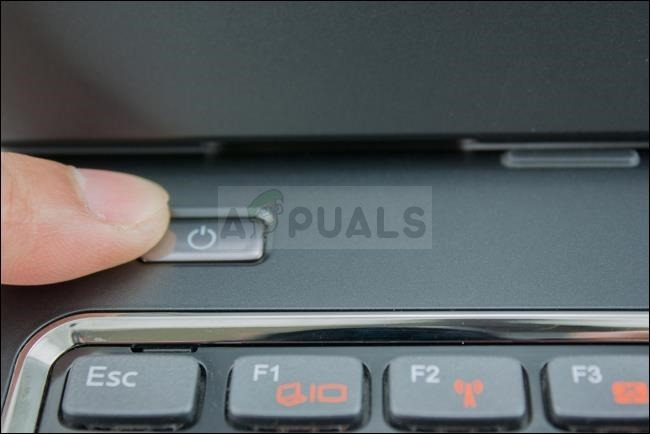
- Slide the battery back into the notch or bay and close the safety latch to lock it into place. Reconnect the AC adapter and boot your computer to try the installing process again.
Solution 3: Delete a Certain Registry Key
There are certain actions you may have tried out on your computer which could have led to a certain registry key being created. This registry key actually causes this problem and deleting it can solve it in no time. If you are trying to install Windows regularly and you are receiving this error, try following the steps below in order to solve the problem.
- Open the Registry Editor interface by typing “regedit” in either the search bar or the Run dialog box. Navigate to the following key in Registry Editor by navigating in the left pane:
HKEY_LOCAL_MACHINE\SYSTEM\CurrentControlSet\Control
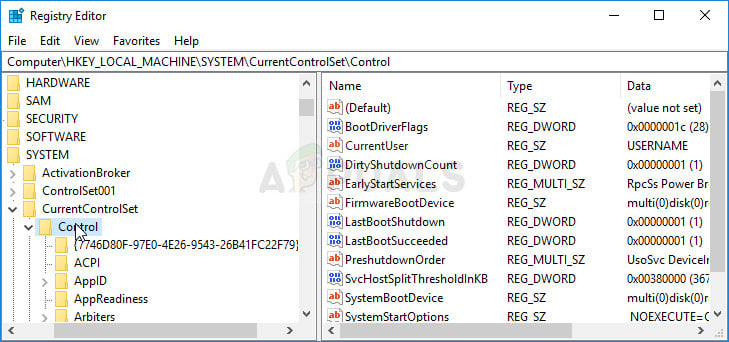
- Under the Control key, you should be able to see a key named MiniNT so make sure you right-click on it and click on Permissions.
- Under the Group or user names section, try to locate your username on the list. If you fail to do so, click on Add >> Advanced >> Find Now. You should be able to see your user account under the Search results section so select it and click OK twice until you back in the Permissions folder.
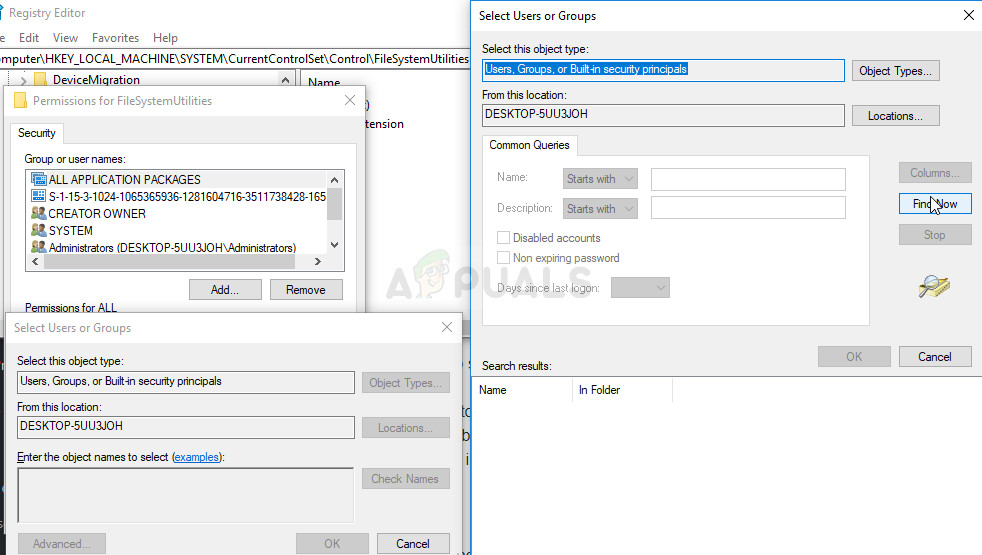
- Select you account in the Group or user names section and check the Full Control checkbox under Permissions for… and apply the changes you have made.
- After that, you can right-click the MiniNT key and click on Delete. Confirm the dialog box which will appear and restart your computer to Apply the changes. Try installing Windows again.
Solution 4: Boot in Normal Startup Before Running the Windows Setup
Changing the way you boot into your computer is something you choose for yourself but everyone will recommend that you switch to the normal startup mode before you try to start a Windows Setup for any purpose. It has worked for several people and we hope it will work for you as well.
- Use the Windows + R key combination on your keyboard in order to open the Run dialog box and type in “msconfig” before clicking OK. If you are using Windows 10, you can also search for “msconfig” in the Start menu or the search bar next to it. The first result should be System configuration so make sure you click on it.
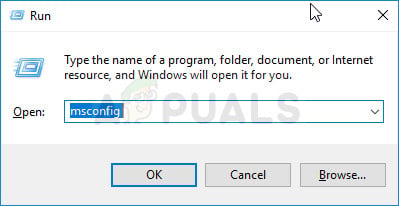
- Stay in the General tab and change the radio button under Startup selection from the previous setting to Normal startup and Apply the changes before exiting. Restart your computer and check to see if the problem is gone.
Solution 5: Format the Drive You Want to Install Windows on
If you want to perform a clean install of Windows on your computer, you will definitely have to format the old drive which will include erasing all of your files. Since you have decided to perform a clean install, you should have already taken care of important files so we will skip that. You shouldn’t skip the formatting of all partitions which have the old system files on it.
The process will differ greatly depending on which installation media you are using (Windows 7, Windows 8, and Windows 10). However, the process is quite similar so we will cover the steps for Windows 10 since most people are installing this OS nowadays.
- Insert the installation media and boot the computer. Setup the languate, time and date settings, etc.
- If you’ve never installed Windows 10 on this computer before, you’ll see the Windows activation screen. Enter your Windows 10 key here. If you don’t have one, but you have a valid 7, 8, or 8.1 key, enter it here instead. You can also skip this part and enter the key after the installation is complete.
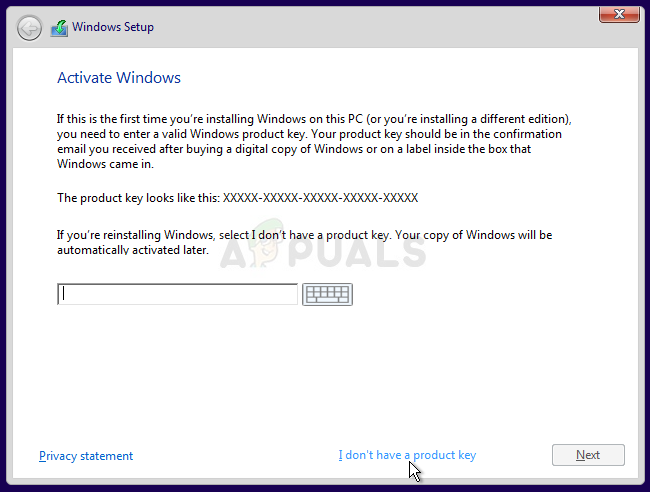
- Go through the setup process normally until you see the “Which type of installation do you want?” screen. Select the “Custom” option to ensure you’re performing a clean install and not an upgrade install which was covered in the first solution.
- You will now see the “Where do you want to install Windows?” screen with the partitions you have active. Choose each one with current OS’ system files on it and click on Delete. Choose the one where you want to install Windows and follow through with the process. The error shouldn’t appear now.
